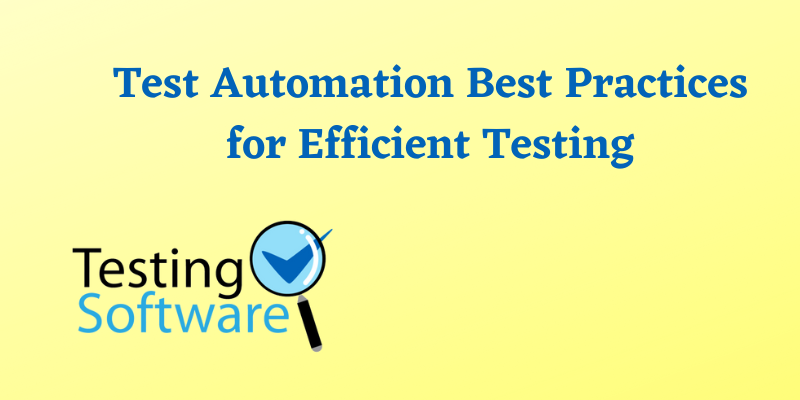
Testing is the process of examining a system or its components to determine whether or not it meets the defined requirements. In layman’s terms, testing is running a system to find any gaps, faults, or missing requirements that contradict the real requirements. If you want more detailed information about Test Automation Best Practices for Efficient Testing, Join the Best Software Testing Course In Chennai at FITA Academy.
Test Automation For Efficient Testing:
Test automation allows for faster feedback, less manual labour, and more overall testing efficiency. However, proper practices must be followed to reap the full benefits of efficiency:
Determine the Appropriate Test Cases:
Not all test cases suit automation. Begin by selecting repeated, time-consuming, crucial, and stable test cases. When automated, they are the ones that give the most value. Manual testing may still be required in complex or exploratory test scenarios.
Plan and Design for Automation:
- Create a good plan before going into automation.
- Define the automation’s scope, objectives, and success criteria.
- Consider the platforms, devices, and browsers that will be used.
- Create flexible, scalable, and maintainable test automation frameworks.
- Based on the project requirements, choose relevant tools and technologies.
Separately Store Test Data:
Test data is an important part of automation. To ensure reusability and maintainability, keep test data separate from test scripts. Use data-driven testing methodologies, which store test data in external files or databases, allowing for quick changes and updates without modifying the test scripts.
Enroll in a Software Testing Online Course to learn more about Software Testing at your Flexible time.
Use Test Scripts That Are Descriptive and Maintainable:
Create test scripts that are simple to read, comprehend, and manage. Use descriptive and meaningful names for variables, functions, and test cases. Use the best coding practices for reuse, abstraction, and modularisation. To improve readability, adequately comment on the code.
Robust Error Handling:
Incorporate error-handling capabilities into your test automation system. Use proper exception-handling strategies to catch and gracefully manage unexpected problems. This guarantees that problems are appropriately reported and aids in troubleshooting.
Prioritise Execution of Test Cases:
Prioritise test cases based on risk, criticality, and business effect. Priority test cases should be executed first to receive rapid feedback. This enables key issues to be identified and resolved more quickly. Prioritisation aids in reducing test execution time and maximising resource use.
Continuous Integration and Delivery:
Integrate test automation with pipelines for continuous integration and delivery. Test suites triggered by code contributions or builds can be executed automatically. This guarantees that tests are run frequently, providing early feedback on the stability and quality of the application.
Regular Maintenance and Refactoring:
Test automation scripts require regular maintenance to stay up with application changes. Update and restructure the test scripts as the programme evolves. Remove unnecessary or old test cases and optimise test scripts to improve efficiency.
Implement Version Control:
Manage and track changes in test automation scripts using version control systems. Collaboration, rollbacks, and greater control over script versions are all possible with version control. It ensures that scripts are accessible, traceable, and recoverable in case of failure.
Continuous Learning and Improvement:
- Stay current on the newest test automation trends, techniques, and technologies.
- Continuously study and improve your automation abilities.
- Participate in online groups, forums, and seminars to learn from industry professionals.
- Regularly analyse and enhance your test automation plan based on comments and lessons learned.
Final Words:
In this blog, you would have understood Test Automation for Efficient Testing. Join the Software Testing Course in Bangalore, which helps to enhance your skill with excellent placement training and course certification.
